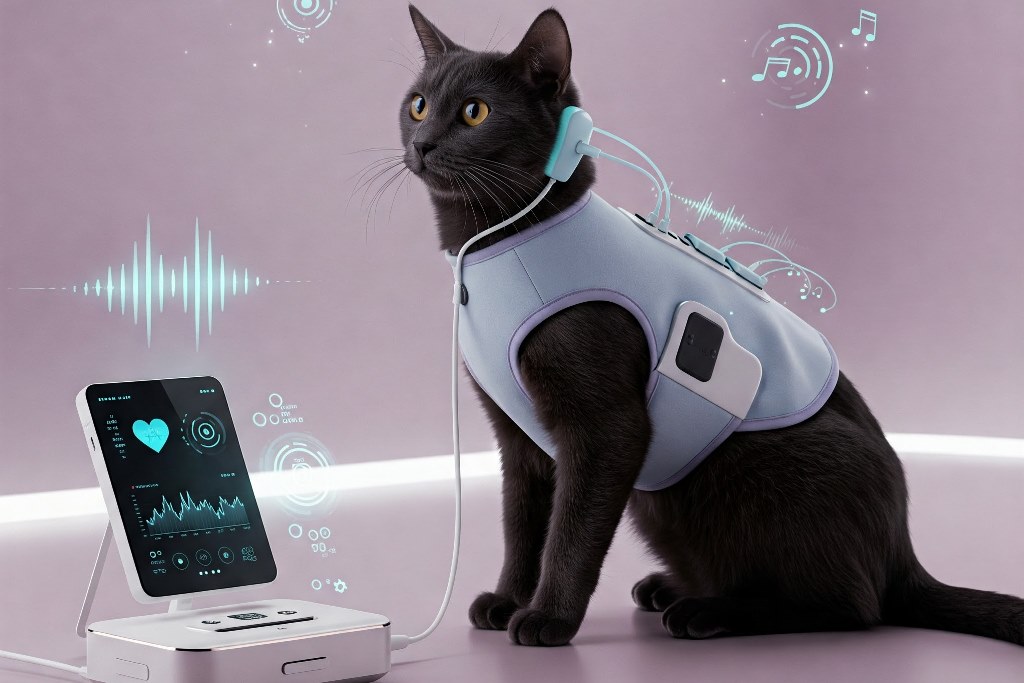
Real-time Dynamic Sound Adjustment for Pets
In recent years, pet owners and researchers have been increasingly fascinated by the potential of using sound as a tool to influence pet behavior and improve their overall well-being. From calming music to training signals, various auditory stimuli have proven effective in enhancing the lives of pets. However, the next frontier in animal training could lie in a groundbreaking concept: real-time dynamic sound adjustment. This innovative approach could transform the way we interact with and train our pets by using technology to adapt sound stimuli based on real-time behavioral cues and biometric data.
Understanding the Basics: Why Sound Matters for Pets
Before diving into real-time dynamic sound adjustment, it's crucial to understand why sound plays such a significant role in pet behavior and training. Animals, particularly pets like dogs and cats, are highly sensitive to sound. Studies have shown that pets respond to different frequencies, tones, and rhythms, which can affect their stress levels, emotional states, and overall behavior.
For instance, classical music has been proven to reduce anxiety in dogs, while certain sounds can trigger excitement or even fear. This sensitivity makes sound a powerful tool for training, relaxation, and overall well-being. By tailoring sounds to meet the needs of a pet at any given moment, we can take animal training to the next level.
What is Real-time Dynamic Sound Adjustment?
Real-time dynamic sound adjustment refers to the use of technology to modify sound stimuli in response to an animal's behavior or physiological signals. Unlike static sound stimuli (like playing a pre-recorded track of calming music), this approach adapts the sound based on real-time data, such as heart rate, breathing patterns, or movement.
For example, imagine a dog in a training session. As the dog begins to show signs of stress—such as increased heart rate or pacing—the sound environment could automatically shift to a calming frequency or music, helping the animal relax. Conversely, if the dog is exhibiting positive behavior, the sound could be adjusted to more energetic tones, reinforcing the good behavior.
This dynamic and responsive system is made possible through advances in wearable technology for pets, as well as improvements in sound design and artificial intelligence (AI).
The Technology Behind Real-time Dynamic Sound Adjustment
To make real-time dynamic sound adjustment feasible, two key technological components are essential:
- Wearable Devices: These devices, similar to pet collars or vests, would monitor the pet’s physiological responses, such as heart rate, body temperature, and motion. These sensors continuously collect data, which is then fed into a central system.
- Sound Adjustment Algorithms: Using AI and machine learning, the system analyzes the incoming data and determines the best auditory stimuli based on the pet’s current emotional state or behavior. The algorithms adjust the sound in real-time, ensuring it aligns with the pet’s needs.
For example, if the pet’s heart rate spikes (indicating stress or anxiety), the system could automatically play softer, slower music or nature sounds to help calm the animal. On the other hand, if the pet is active and engaged, more stimulating sounds or rhythms could be introduced to maintain excitement and motivation.
Benefits of Real-time Dynamic Sound Adjustment for Pets
1. Improved Training Effectiveness
One of the most significant advantages of this technology is its potential to enhance training effectiveness. By adjusting sound stimuli in real-time, pets can receive immediate reinforcement or calming signals that align with their current behavior. This timely feedback loop can accelerate the learning process, as pets are more likely to associate positive sounds with desired behaviors and calming sounds with relaxed states.
2. Reduction in Anxiety and Stress
Many pets suffer from anxiety, whether it's separation anxiety, fear of loud noises, or general stress. Real-time dynamic sound adjustment offers a way to monitor and respond to these stressors immediately. For example, if a dog becomes anxious during a thunderstorm, the system can detect the physiological signs of stress and immediately play calming music or sounds to alleviate their fear.
3. Personalized Pet Care
Every pet is unique, with distinct preferences and emotional responses to different stimuli. Real-time dynamic sound adjustment allows for highly personalized care. By continuously monitoring a pet's biometric data, the system can learn their specific reactions to various sounds and adjust accordingly. Over time, this tailored approach could lead to a deeper understanding of an individual pet’s emotional landscape and improve their overall quality of life.
4. Enhanced Bond Between Pet and Owner
The ability to adjust sound based on a pet’s needs can also improve the bond between pet and owner. For example, owners could use the system to create a soothing environment for their pets when they are feeling anxious or excited. This shared experience can lead to a stronger emotional connection, as pets will begin to associate their owners with positive, calming interactions.
Potential Applications of Real-time Dynamic Sound Adjustment
1. Behavioral Therapy for Rescue Animals
Rescue animals often have a history of trauma, making them more susceptible to stress and behavioral issues. Real-time dynamic sound adjustment could be a valuable tool in rehabilitating these animals. By providing an adaptive auditory environment, rescue animals can feel safer and more comfortable during the rehabilitation process, making it easier for trainers to work with them.
2. Assistance for Service Animals
Service animals, such as guide dogs or therapy animals, play a vital role in assisting people with disabilities. By integrating real-time dynamic sound adjustment into their training or work environments, service animals can be kept calm and focused during their duties. For example, if a service dog detects a stressful situation, the system can adjust the sound to help them maintain composure, improving their effectiveness.
3. Pet Wellness and Health Monitoring
Pet owners could use real-time sound adjustment technology as part of their pet’s overall wellness routine. For example, sound adjustments could be made during vet visits to help reduce anxiety, or during daily activities to ensure pets are emotionally balanced and engaged.
Challenges and Future Prospects
While the concept of real-time dynamic sound adjustment for pets holds great promise, there are several challenges to address before it becomes mainstream. These include:
- Technological Limitations: The wearable devices required for real-time monitoring need to be comfortable, non-invasive, and capable of providing accurate data. Additionally, sound adjustment algorithms must be sophisticated enough to interpret the data and respond appropriately.
- Cost: Advanced wearable technology and AI-driven sound systems could be costly, making this technology initially inaccessible for many pet owners.
- Animal Sensitivity: Not all pets will respond to sound in the same way, so it’s important to ensure the system is flexible enough to accommodate various animal temperaments and preferences.
Despite these challenges, the future of real-time dynamic sound adjustment for pets looks promising. As technology advances, we can expect more affordable and user-friendly solutions that can be integrated into everyday pet care.
Real-time dynamic sound adjustment for pets represents a cutting-edge approach to animal training, wellness, and behavior modification. By leveraging technology to tailor sound stimuli to an animal's emotional and physiological state, this innovative method has the potential to revolutionize how we care for and train our pets. While still in its early stages, the combination of wearable tech, AI, and personalized sound therapy offers exciting possibilities for improving the lives of pets and their owners.
As we continue to explore this frontier, it’s clear that sound will remain an essential tool in shaping the emotional well-being of our pets, offering a future where animals live in environments designed to meet their unique needs in real-time.
Sources:
- Studies on pet behavior and sound, such as those found in research published by the American Kennel Club (AKC) and various pet psychology journals.
- Expert opinions from animal behaviorists and veterinarians on the role of sound in animal care.






















